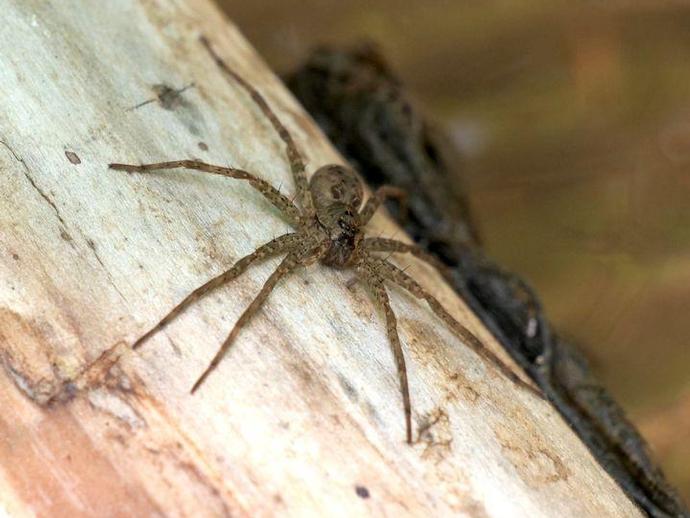June 4, 2021
It's time for #BenInNature presented by our friends at Carter Bank & Trust!
Ahh, the fishing spider. Even if you love and respect arachnids, the fishing spider can be a bit ... startling. While these are some of Virginia's largest spiders by leg span, they're also not a threat to us humans.
I'm pretty sure that this particular fishing spider is Dolomedes tenebrosus, also called the dark fishing spider (it's sometimes hard to tell the difference between this species and Dolomedes scriptus, the striped fishing spider). A large female fishing spider can have a body about an inch long and a leg span of more than three inches, which may not sound like a whole lot until you see one in person. The pictured spider is actually smaller than many I've seen!
Fishing spiders are generally found near streams, ponds, and other bodies of water, often perched so that they're staring into the water. While they frequently ambush insects on land, they will also occasionally submerge just under the surface of the water to hunt for tadpoles and -- yes -- small fish! The hairs on their bodies trap air bubbles, acting as a sort of scuba tank that allows them to stay submerged for as much as half an hour!
The dark fishing spider is active during the summer months and can be found throughout eastern North America. Unlike other species in the genus, this one can often be found pretty far from water (I used to find them in my basement from time to time). You'll most often see them on tree trunks or fence posts, facing down and waiting for a delicious bug to stroll past so they can drop down and ambush it.
Despite its size, the dark fishing spider is disinclined to bite and is more likely to run away from humans (the one in this photo, which I found on a log in the middle of a stream, kept scurrying to the underside of the log when it would see me approach). If someone does manage to get bitten by a dark fishing spider, the bite is supposed to be no worse than a bee sting and is not medically significant.
ABOUT #BenInNature
Social distancing can be difficult, but it presents a great opportunity to become reacquainted with nature. In this series of posts, Administrator of Science Ben Williams ventures outdoors to record a snapshot of the unique sights that can be found in the natural world. New updates are posted Monday - Friday, with previous posts highlighted on the weekends. This series of posts is made possible thanks to the support of VMNH Corporate Partner Carter Bank & Trust (www.cbtcares.com).
NATURE PHOTO IDENTIFICATIONS
If you discover something in nature that you would like help identifying, be sure to message us right here on Facebook with a picture (please include location and date of picture) and we'll have our experts help you identify it!

 Hours & Admissions
Hours & Admissions Directions
Directions

